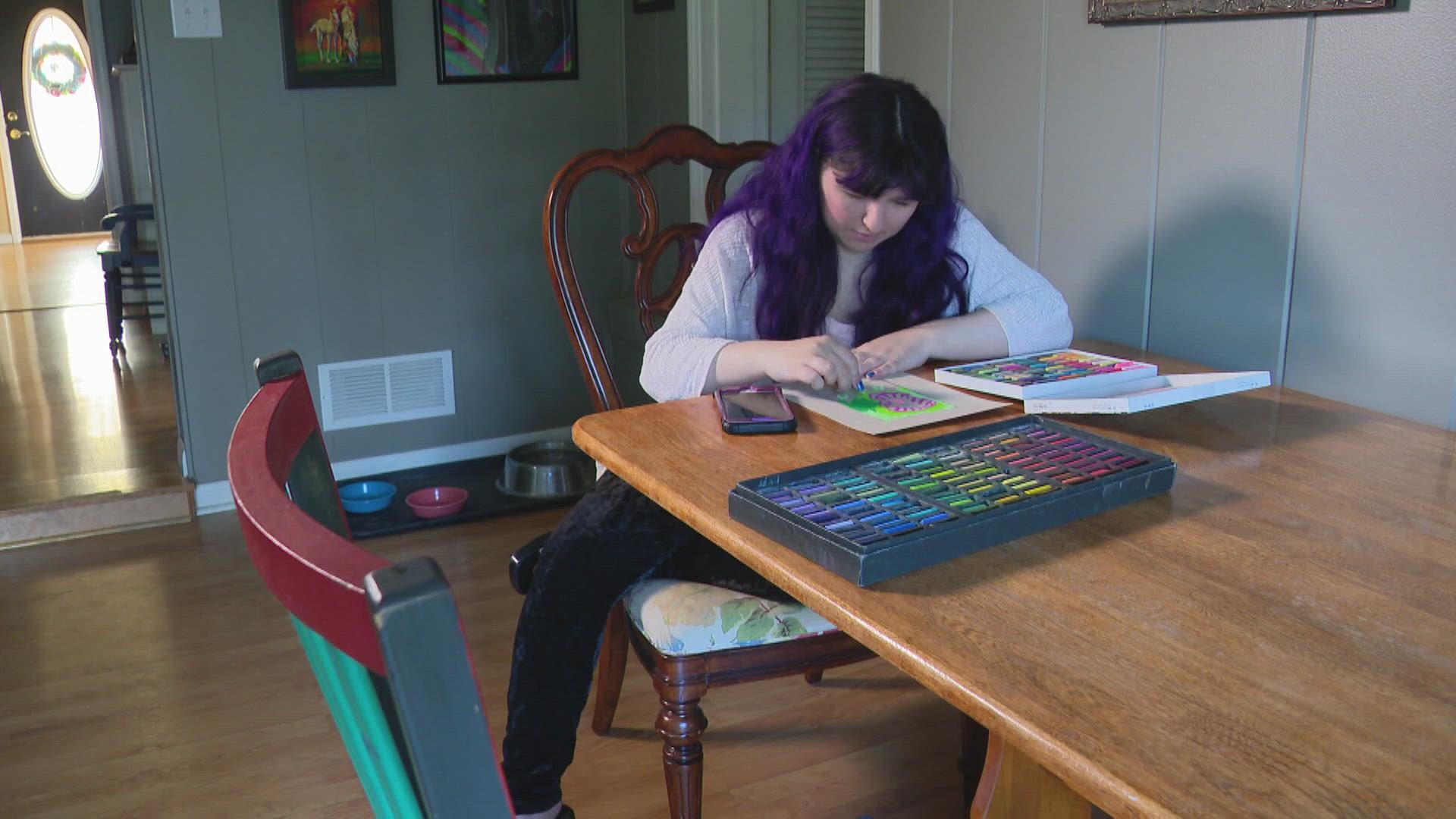INDIANAPOLIS — Living with a disability can be expensive with costs including support services and adaptive transportation.
That is why Indiana is one of the states that offers an ABLE savings plan. The account lets people with a disability grow their money, tax-free, and put it toward living expenses.
Who's using the account
Everyone learns a little bit differently. For Claire VanWassenhove, that means being hands-on.
"I do my best when someone shows me how to do something. Otherwise, it's like, if I learned vocally, it just doesn't click with me," VanWassenhove said.
VanWassenhove, who is 25 years old, has autism and attention deficit hyperactivity disorder.
It is when she received those diagnoses a few years ago that she realized just how pricey her expenses can be.
"The place down the street that I got tested was going to be a couple of thousand dollars," VanWassenhove said, "I feel like, I need to start pulling [my] weight."
In addition to working, she signed up for an INvestABLE account.
What are ABLE accounts?
Indiana is one of the 46 states that offer this savings plan.
If you like another state's plan better than Indiana's, you can open an account as long as the state accepts outside residents.
For example, Indiana welcomes non-residents into its program while Florida does not.
The ABLE savings plans work like a 529 college plan.
People with a disability present before the age of 26 can set money aside, invest it and use tax-free growth for qualified expenses.
If money is used on a non-qualified expense, there is a penalty.
Amy Corbin with the Indiana ABLE Authority, however, said the qualifications are broad.
"It has to somehow be related to them living with their disability and improves their health, independence or quality of life," Corbin said.
That can include, but is not limited to, housing, transportation, health and wellness and education.
Signing up for the account, Corbin added, does not hurt a person's eligibility for other benefits.
"If someone is on SSI, or Medicaid, they're limited to $2,000 in resources," Corbin said, "but if they use an ABLE account, they can save money above and beyond that $2,000 resource limit."
The 2023 annual contribution limit is $17,000 unless the person works. Then, they may be able to add more. Family and friends can also make contributions.
The plan is helping VanWassenhove pay for future art classes.
Editor's Note: This story has been updated to reflect that ABLE earnings grow tax free and that the 2023 annual contribution limit is $17,000.

